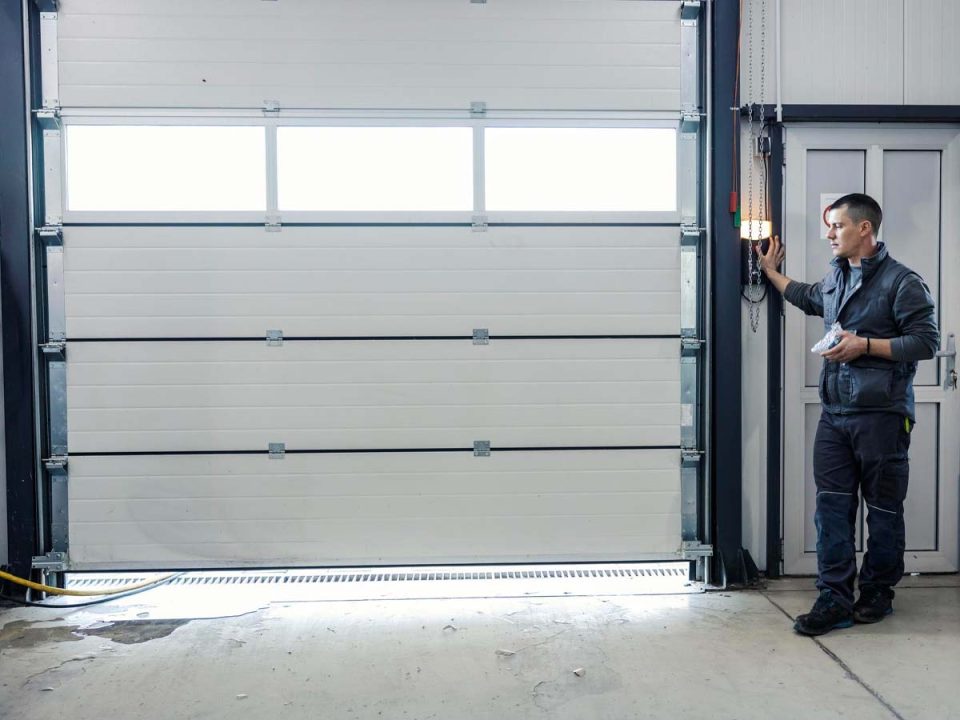
Garden Metal Trellises, Free-Standing for Climbing Plants
November 8, 2023
Can I Put Barbed Wire on My Fence?
December 20, 2023When we think about the structures we live in, work in, or simply walk into, the entrance plays a pivotal role in our first impressions. The door represents the threshold between the world outside and the space within. But when it comes to the sizes of building entrance doors, there’s more than meets the eye. Keep reading our article to find the answer to the question: What is the size of a building door?
What is a Typical Standard Door Size of a Building?
In general, the dimensions of a standard door ensure that most individuals can pass through comfortably without any hindrance. Now, let’s look at some of the common sizes of building entrance doors in various settings:
What is the Standard Commercial Door Size?
The standard door size for commercial buildings typically measures 36 inches in width, allowing for the easy passage of wheelchairs and delivery carts, ensuring businesses are accessible to all.
What is the Size of a Building Door in Meters?
In meters, a standard door size for residential buildings usually measures about 0.81 meters in width. This standard door size in meters is considered adequate for everyday use, ensuring individuals can enter and exit buildings without inconvenience.
What is the Standard Building Door Size in Inches?
Measured in inches, the width of a standard building door is commonly set at 32 to 36 inches. These sizes of building entrance doors accommodate various needs and designs, ensuring functionality and aesthetic appeal are both taken into account.
What is the Standard Building Door Size in Feet?
The standard door size in feet typically spans about 2.5 to 3 feet in width. This dimension facilitates a comfortable passage for most people, reflecting a balance between design considerations and practicality.
What is the Size of a Standard building door in CM?
When converted to centimeters, the width of a standard building door falls in the range of 81 to 91 cm. These sizes of building entrance doors are crucial for architects and builders as they design entrances that are welcoming and accessible.
Size of a Standard Entry Door in an Apartment Building
Apartment buildings, balancing the need for security and accessibility, often feature entry doors that are 36 inches wide. These sizes of building entrance doors are considered standard, providing ample space for residents and guests to enter while maintaining a secure environment.
How Wide is a Standard Exterior Door?
The width of a standard door size public building is typically 36 inches. This width ensures that the door is accessible to everyone, including those with disabilities, and complies with regulations aimed at making public spaces inclusive.
What Size Are Entry Doors for Houses?
Now, it is time to answer a certain question: “What is the standard entryway door size?” A standard exterior door in the United States has a height of 80 inches (203.2 cm) and a width of 36 inches (91.44 cm). This is commonly known as a 3-0 door for its width and a 6-8 door for its height. These doors typically have a thickness of 1 ¾ inches (4.44 cm).
However, other sizes of building entrance doors are available to meet various requirements and design preferences. For instance, doors can also be found in widths of 30 inches (76.2 cm) or 32 inches (81.28 cm). Door heights of 96 inches (243.84 cm) or even greater can be used for a grander entrance or to satisfy specific design needs.
How Wide is a Car Entrance Gate?
The width of an entry gate for cars can vary greatly. But here are some general guidelines:
- Residential Driveways. The standard width for single-family homes is between nine and twelve feet. Most family cars will fit through here without a problem.
- Commercial Properties. The gates at a business or industrial property may be wider, anywhere from 12 to 24 feet, to let in trucks and delivery vans.
- Double Gates. The opening of double gates on some properties can accommodate larger vehicles.
- Custom Sizes. The width can be adjusted to suit individual needs, such as making room for wider vehicles or adding extra lanes of traffic.
Building Entrance Doors Cost in Las Vegas
To learn about the cost of your desired yet strong entrance gate for your Las Vegas property, you can contact us for a free estimate.
Best Affordable Entrance Gates Near Me in Las Vegas
Transform your Las Vegas property into a stunning sanctuary of luxury with our outstanding custom iron elegance! Experience the unparalleled craftsmanship of our premium-quality iron doors and gates at Vegas Valley Ironworks.
Don’t miss out on the opportunity to elevate the visual appeal and security of your property. Contact us today and discover the perfect blend of style and durability that will leave a lasting impression.
Conclusion
The sizes of building entrance doors are a topic that goes beyond mere measurements. In addition to being accessible, safe, and beautiful, it’s also functional. Choosing the right door size is essential when designing or renovating a building to create a welcoming and functional space.
FAQs
What size are the entry doors for houses?
US houses usually have 80-inch (6 feet 8 inches) high and 36-inch (3-foot) wide entry doors.
What are the external door sizes building regulations?
It is typical for residential exterior doors to measure 80 inches (6 feet 8 inches) by 36 inches (3 feet). The ADA requires a minimum 32-inch clear width for commercial/public buildings.
How do you measure an entryway door?
Measuring an entryway door is as simple as measuring the width horizontally along the door’s top, middle, and bottom. Measure the height vertically on the left, middle, and right sides. The thickness of the door should be measured from front to back. If there are variations in width and height, use the largest measurement.
What size door is building regulations?
Building regulations require a minimum clear width of 32 inches for commercial and public buildings. The standard width for a house is 36 inches.
Are most doors 32 or 36 inches?
Most doors are typically 36 inches wide, especially for commercial and public buildings, to ensure accessibility.





